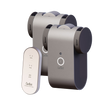Introduction
Smart homes have been around for a while now, but they are still not as ubiquitous as many predicted they would be. One reason for this is that the technology behind them is not yet advanced enough to make them truly convenient and easy to use. However, with the advent of ChatGPT, that may be about to change.
What is ChatGPT?
ChatGPT is a state-of-the-art artificial intelligence language model developed by OpenAI. It is capable of generating human-like responses to natural language prompts and has been trained on a massive dataset of text from the internet. ChatGPT is able to understand context, recognize patterns, and generate coherent and relevant responses to a wide range of questions and prompts.
The Role of ChatGPT in Smart Homes
With its ability to understand natural language, ChatGPT has the potential to revolutionize the way we interact with smart homes. Currently, most smart home devices require users to interact with them through a smartphone app or a voice assistant like Amazon's Alexa or Google Home. While these devices are certainly more convenient than traditional methods of controlling home appliances and systems, they still require users to learn specific commands and navigate complex menus.
ChatGPT could change all of that. Instead of learning specific commands or using a voice assistant, users could simply ask their smart home devices to perform tasks in natural language. For example, instead of saying "Alexa, turn off the living room lights," a user could say "Hey, house, can you turn off the lights in the living room?" ChatGPT would be able to understand the user's intent and perform the requested task.
ChatGPT in Action
Let's take a look at some specific scenarios in which ChatGPT could be used in a smart home:
Scenario 1: Cooking dinner
Imagine you're in the kitchen cooking dinner and you need to preheat the oven. Instead of walking over to the oven and fiddling with the controls, you could simply ask ChatGPT to preheat the oven to a specific temperature. ChatGPT would understand your request and send the appropriate command to the oven, which would start preheating immediately.
Scenario 2: Watching TV
You're settling in to watch your favorite show on TV, but you can't find the remote. Instead of getting up to look for it or using a voice assistant, you could simply ask ChatGPT to turn on the TV and change the channel to the show you want to watch. ChatGPT would understand your request and send the appropriate commands to the TV and cable box.
Scenario 3: Going to bed
It's time to go to bed, but you realize you left the living room lights on. Instead of getting up to turn them off or using a voice assistant, you could simply ask ChatGPT to turn off the living room lights. ChatGPT would understand your request and send the appropriate commands to the lights, which would turn off immediately.
Conclusion
The potential for ChatGPT to transform the way we interact with smart homes is immense. With its ability to understand natural language, ChatGPT could make controlling home appliances and systems as easy as having a conversation with a friend. While there are certainly still some technical hurdles to overcome, the future of smart homes looks bright with ChatGPT leading the way.





















Leave a comment
All comments are moderated before being published.
This site is protected by reCAPTCHA and the Google Privacy Policy and Terms of Service apply.